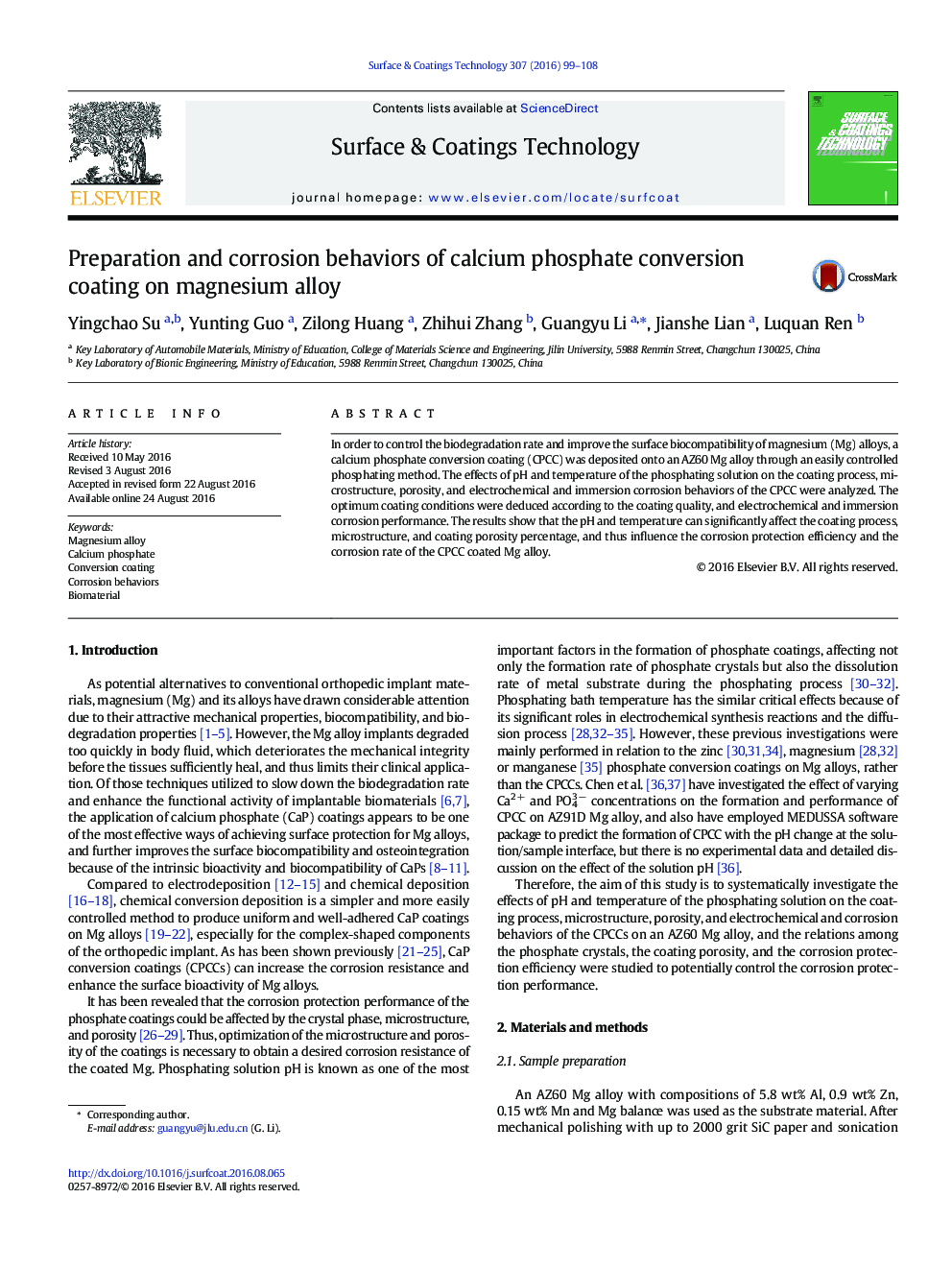| Article ID | Journal | Published Year | Pages | File Type |
|---|---|---|---|---|
| 1656187 | Surface and Coatings Technology | 2016 | 10 Pages |
•Monitoring by open circuit potential curves during different coating processes•Influences of pH and temperature on the electrochemical corrosion properties•Correlations of Ca content, coating porosity, and corrosion protection efficiency
In order to control the biodegradation rate and improve the surface biocompatibility of magnesium (Mg) alloys, a calcium phosphate conversion coating (CPCC) was deposited onto an AZ60 Mg alloy through an easily controlled phosphating method. The effects of pH and temperature of the phosphating solution on the coating process, microstructure, porosity, and electrochemical and immersion corrosion behaviors of the CPCC were analyzed. The optimum coating conditions were deduced according to the coating quality, and electrochemical and immersion corrosion performance. The results show that the pH and temperature can significantly affect the coating process, microstructure, and coating porosity percentage, and thus influence the corrosion protection efficiency and the corrosion rate of the CPCC coated Mg alloy.
